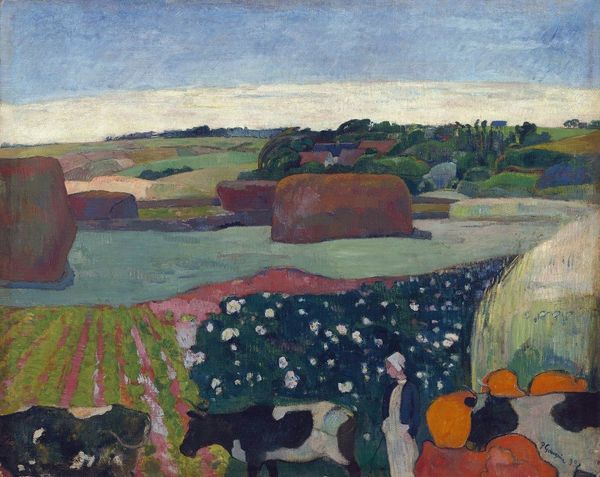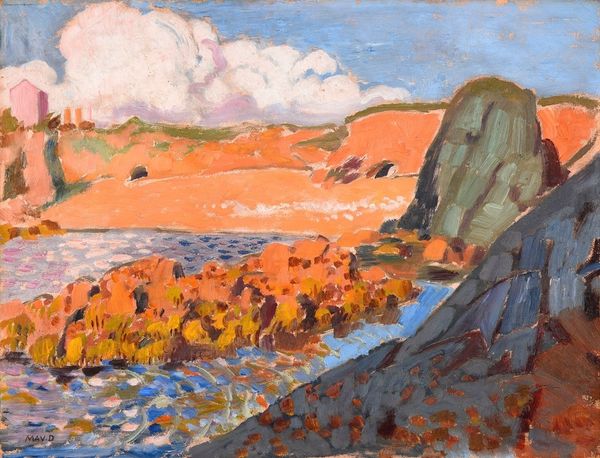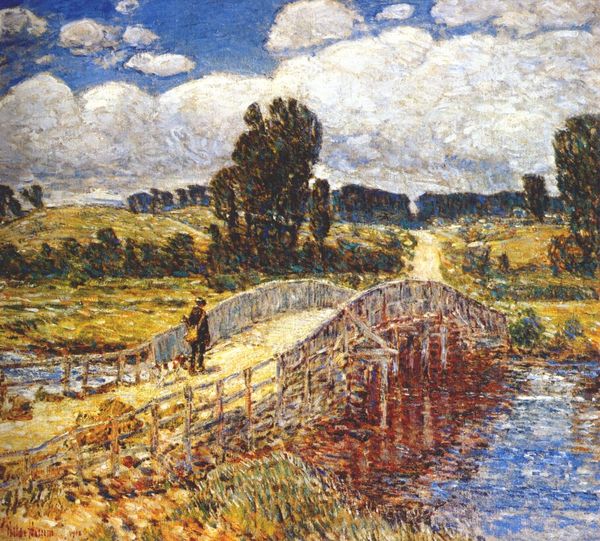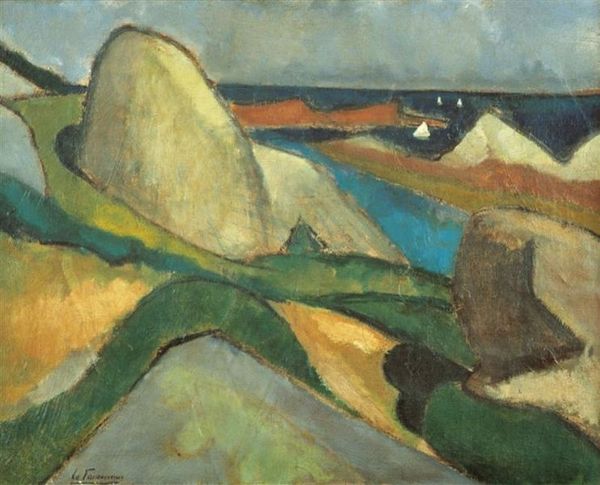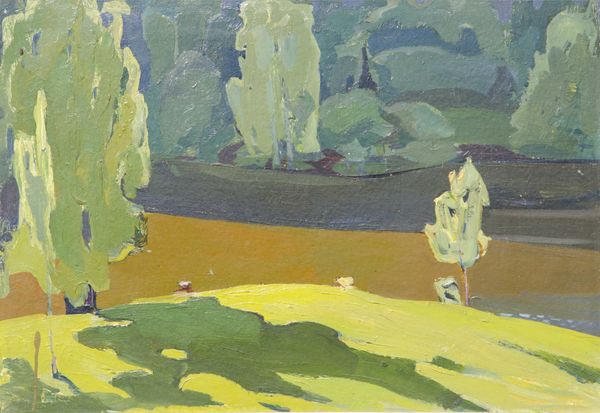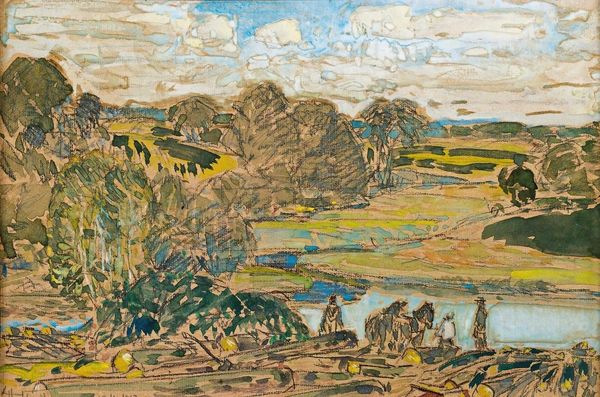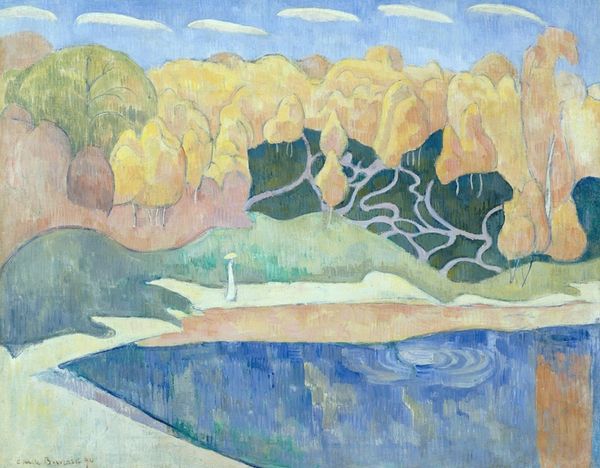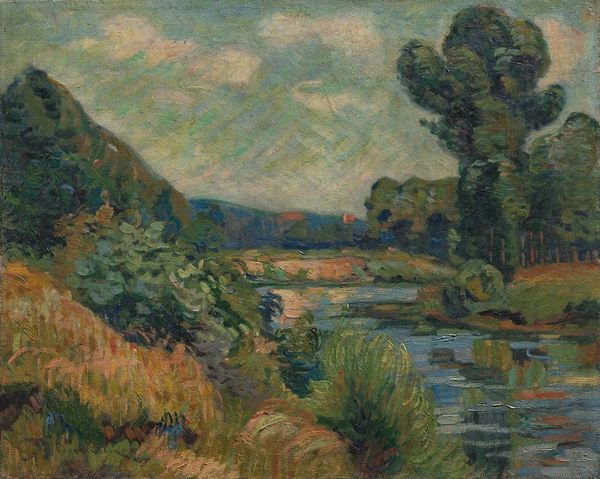
painting, oil-paint
#
figurative
#
painting
#
impressionism
#
oil-paint
#
landscape
#
impressionist landscape
#
figuration
#
oil painting
#
genre-painting
#
post-impressionism
Copyright: Public Domain: Artvee
Curator: Standing before us is Paul Gauguin's "Washerwomen," painted in 1888. It’s an oil painting, portraying women doing laundry by a stream in a rural landscape. What are your initial thoughts? Editor: Immediately, there’s a lovely earthy warmth that draws me in, even though the subject seems so…humble. It feels more about color and form than dirt or toil. There's an emotional simplicity. Curator: Indeed. The flattened perspective, along with the bold, almost arbitrary color choices, de-emphasizes realism. We must consider how these Bretons earned their living, and Gauguin highlights their hard work. Look at the arrangement of the washerwomen – repetitive movements implied through rhythmic composition. Editor: It's funny, but my first thought wasn’t necessarily labor, though it’s there if you think about it. The intense blues and greens… they transform the mundane into something idyllic. Gauguin's focus shifts our awareness of class. He shows us labor, and transforms the aesthetic in how the work is constructed. What were you expecting? Curator: We should consider the materials they would use, the equipment: wooden wash tubs, the strong lye soaps... These objects also tell a story of what their economic system can yield. Editor: Right. I’m thinking the abstraction, in a way, honors the labor of these women precisely by taking it *beyond* the strictly literal. By embracing what he considered primitive modes of representation, and simplifying forms. This highlights a connection between humanity and the material world. I was too quick with "idyllic." I can see what you mean about hard work. Curator: Yes, by disrupting the conventions of perspective and form. Gauguin draws attention to the physical reality of these women’s lives, elevating their status in his work. Editor: It is an image to feel and contemplate and question one's interpretation about, as well as appreciate the raw beauty. Curator: Agreed. "Washerwomen" certainly holds a dialogue about art, labor, and visual representation that continues to inspire discourse and challenge our perspectives.
Comments
No comments
Be the first to comment and join the conversation on the ultimate creative platform.
